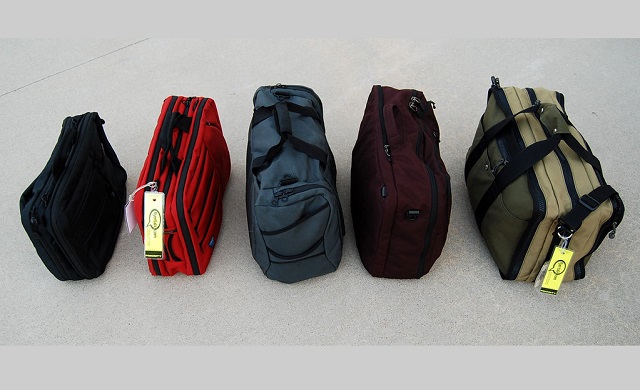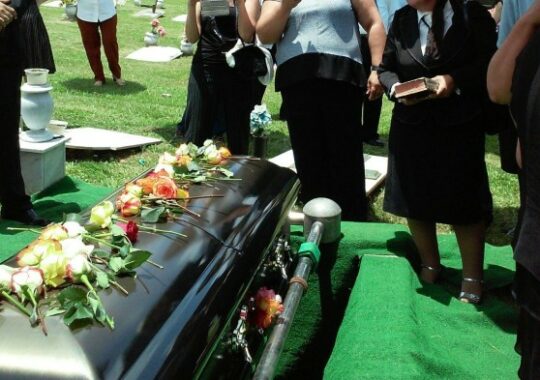Air travel is considered as the most convenient mode of transportation, but it’s far from perfect. Perhaps the main concern with flying is that there is an extensive list of what a traveler can and cannot bring to their carry on baggage.
Some items need to conform with certain rules before they can be allowed inside a plane. Others will be confiscated right at the security checkpoint. The Transportation Security Administration or TSA set the standards to allowable items during flight.
Here we will discuss what items are allowed and not allowed on airplane, as per TSA carry on rules.
THE ANATOMY OF THE CARRY-ON BAG
Before anything else, a passenger should keep in mind that there are guidelines to the size and weight of carry on bags. The airline has the discretion on the measurements of the bag and its corresponding weight. The idea is to ensure that the bag fits the overhead bin or the space beneath the seat.
The standard bag size for domestic flights, give or take a few inches, is 22” x 14” x 9” (L x W x H).
Each passenger is allowed only one carry on luggage which should be free from any prohibited items. The owner is expected to follow the conditions set by the airline by measuring and weighing the bag before proceeding with the screening process.
PRO TIP: For your travel to EU with an EU regulated airline, or from EU airport to anywhere in the world, if reached the final destination with a delay of more than 3 hours, you are eligible for compensation under EU261 rule. Enter your flight details at Claim Flights compensation calculator and check for free the amount to claim.
WHAT IS THE TSA CARRY ON RULES AND RESTRICTIONS?
Domestic and international flights that come to and from the US are expected to follow the TSA carry on rules to ensure the safety of the passengers and crew. There are policies on liquids, sharps and other questionable items that are addressed by the regulation set by this authorized body.
Liquids on plane
The TSA is very clear when it comes to its ruling about liquids that may be allowed in the flight. Liquids, gels and aerosols should be packed in a secure container measuring only 3.4 ounces (100 mL) or less. These should fit just one quart-sized transparent, zip-locked bag.
The TSA liquids rule is easy enough to remember with its simplified 3-1-1 formula: 3.4-ounce containers placed in a one-quart clear, airtight bag for each passenger.
Any liquid including gels, aerosols, creams or paste should conform to this rule strictly. The TSA checks carry on bags thoroughly, so it would help if these liquid containers are packed in a transparent plastic bag. This prevents slowing down the line at the security checkpoint.
Any liquid that exceeds 3.4 ounces may be thrown away by the safety officer or moved to the checked luggage. Additionally, any powdered item is subject to additional screening (x-ray or by hand) if it goes beyond the 12-ounce limit.
Traveling with a medical condition or children
The TSA allows medications that are liquid in nature or mixed with water when taken. the medication should bear the name of the passenger and details of the prescribing doctor. Also, it has to be properly labeled. For safety purposes, the traveler has to declare the medication upon inspection.
A passenger traveling with children should also declare any formula or breast milk, or baby food they may be carrying with them. It should be of reasonable quantity and does not need to be in a zipped plastic bag.
The TSA has the right to subject to additional screening these two items, which may be under the TSA carry on restrictions.
Food and alcohol on plane
Solid food items are generally allowed in the carry on luggage, but it is upon the airline’s discretion to prohibit food that may have a pungent odor that may trigger sensitivity or allergies in another passenger.
For liquid food items, the TSA liquids rule will still apply. This is true for ketchup, yogurt, jelly or peanut butter and anything that has the consistency of a gel, cream, paste or liquid.
Frozen food can be allowed inside the plane provided that it is not melted. If it is, the 3-1-1 rule would apply as well.
For international flight passengers, one liter of alcohol purchased at the duty free may be allowed as long as these do not go over 140 proof or 70% content. This is correlated to the FAA regulation on alcoholic beverages.
Makeup in carry-on
Again, the consistency of the makeup will ultimately determine whether it will be confiscated at the screening process or not. The standard 3-1-1 TSA carry on rule for liquids apply to moisturizers, liquid foundation, toothpaste, mouthwash, nail polish and perfumes. A travel-sized preparation of such items might be bought, but it would be wise to place them directly in checked bags if they go beyond the 3.4-oz. limit.
Solid makeup items, however, are safe to carry and does not belong to the TSA carry on restrictions.
Sharp objects on plane
Sharps can be considered as dangerous items and are therefore generally not allowed in a carry-on. The TSA and other international security authorities strictly prohibit sharp objects like knives, box cutters, cleavers and others. These should be packed in the checked luggage, but would still be subject to additional screening if deemed dangerous.
Scissors less than 4 inches in length may be allowed in the carry-on. Knitting needles may also be permitted, and as well as disposable or electric razors. However, the TSA agent will always have the final say in any of the items and may confiscate anything that they find to be harmful to other passengers on the flight.
Sporting Equipment
Any sporting equipment that exceeds the size limit of carry on luggage should be checked in instead. Also, some equipment can potentially become weapons and are therefore prohibited in carry-on. Some examples are ski poles, hockey sticks, baseball or cricket bats, or golf clubs, among others.
Other sporting goods that can be brought in the carry-on are deflated sports balls, skates, and tennis rackets. These are deemed allowable under the TSA carry on rules.
Flammables
Flammable items like chemicals or camping stoves are absolutely not allowed in carrying on or checked bags. There are some exceptions; one lighter may be packed provided that it is empty of fuel. A book or packet of safety or strike anywhere matches may also be allowed, but only in the carry-on and never on checked baggage.
The TSA carry on restrictions on flammables are followed strictly. Remember, smoking in flight is a criminal offense, and it naturally follows that ignitable materials are definitely a no-no in planes.
Weapons and Tools
Guns and weapons are prohibited and anyone should not attempt to bring them into the plane. Tools such as crowbars, hammers and axes are also banned in a plane. However, a passenger may bring screwdrivers or wrenches that are only 7 inches or less in length. A multi-tool pack can also be brought as long as the contents are blade-less.
Batteries on plane
Dry cell rechargeable or alkaline batteries, Li-ion batteries, lithium metal batteries and battery chargers are allowed. The TSA carry on restrictions for batteries cover car batteries and spare lithium (metal or ion) batteries and are therefore not allowed in-flight.
BOTTOM LINE
A passenger must always ensure that their bags, checked in or not, must always conform to the TSA rules. This is to prevent any hassle at the security checkpoint and to protect not only the traveler’s safety but for other passengers and flight crew as well.
It is important to have a clear understanding of what items are allowed and not allowed on airplane to ensure a smooth flight for the traveler.





